Intimate Journey Into the World of Sloths
Sam Trull, Sloth Love
 Most every social media butterfly has seen at least one cute video of a sloth (If not, check out our Facebook page!). These litter critters are so cute, that many people want one as a pet. However, sloths are a wild animal and are illegal to own.
Most every social media butterfly has seen at least one cute video of a sloth (If not, check out our Facebook page!). These litter critters are so cute, that many people want one as a pet. However, sloths are a wild animal and are illegal to own.
Photographer Sam Trull says she "went to Costa Rica for the primates but stayed for the sloths." She has the lowdown on sloths, and she says people think they're slow. However, she says "they can be fast when they want to and their nails are pretty scary too."
Sam tells us that sloths belong to the xenarthran family and are most closely related to armadillos and anteaters. They are an arboreal mammal and live solely in the trees and can't live without them. As a result, they wouldn't make great pets anyway as they couldn't live in a house.
 Sloths only eat leaves, and in fact, three-toed sloths are not found in captivity (zoos, etc.) outside of their habitat country because they wouldn't survive. They get too stressed out and no one can get their diets correct. So how can you tell when a sloth is stressed out when they have a permanent smile on their face? That is the hard part!
Sloths only eat leaves, and in fact, three-toed sloths are not found in captivity (zoos, etc.) outside of their habitat country because they wouldn't survive. They get too stressed out and no one can get their diets correct. So how can you tell when a sloth is stressed out when they have a permanent smile on their face? That is the hard part!
You can, however, find some two-toed sloths in zoos. These sloths can be extremely dangerous and have a pretty bad bite.
When Sam first came to Costa Rica, she started working with an organization called, "Kids Saving the Rain Forest." They also have a wildlife rescue center there and this is where Sam first fell in love with sloths.
When Sam first started working with sloths, she realized that there was such a great need to study and learn more about them. They also need to figure out how to release a "hand-raised" sloth and to monitor them upon their release into the wild. While some two-toed sloths in zoos have lived into their forties, the best guess for their lifespan in the wild is around 20 years.
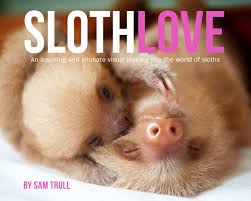 In August of 2014, Sam co-founded the Sloth Institute Costa Rica whose vision is to enhance and expand scientific knowledge about sloths to assure their global conservation and preservation.
In August of 2014, Sam co-founded the Sloth Institute Costa Rica whose vision is to enhance and expand scientific knowledge about sloths to assure their global conservation and preservation.
Sam shares intimate portraits of these captivating and endearing animals from her unique perspective as their protector, adopted mother and friend in her book, "SLOTHLOVE."
http://www.theslothinstitutecostarica.org
The Weekly "Once-Over" Part II
Doc Halligan, Lucy Pet Foundation
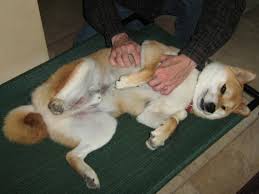 Last week, Doc Halligan taught us how to give our pet a weekly check up. She stated that knowing exactly what to look for could mean the difference between life and death and that early detection gives you the best odds when it comes to your pet's health.
Last week, Doc Halligan taught us how to give our pet a weekly check up. She stated that knowing exactly what to look for could mean the difference between life and death and that early detection gives you the best odds when it comes to your pet's health.
We started with their face, which included their lips, nose, eyes and mouth. This week, we will move further down their bodies and tell you how to search for anything abnormal.
But before we start, make sure you are performing your weekly at-home exam in a good light, taking a systematic approach and doing it the same way every time so you don't miss anything. Be sure to sneak in lots of hugs and kisses so your pet learns to enjoy it; you might even find a special petting spot during the once-over.
Skin and Coat
The skin is the largest organ of the body and is also the first line of defense against disease. Look closely at your pet's skin by parting the hair in several spots or blowing gently. It should be clean and dry. Look and feel for areas of swelling, heat, scrapes, pain, hair loss, crusting, or redness. Some pets have pigmentation or freckles on their skin, which is considered normal. Now run your hands all over your pet's body, including all four legs and lift up the tail. You'd be amazed at how many animals develop tumors or infections on the underside of the tail. And don't forget to look at the tummy. (You never know - this could be a favorite spot for petting!) Check for lumps, bumps and growths of any sort. Look closely under the fur because small bumps can be hard to see. The most common sites for tumors to grow are on the skin, mouth, mammary glands and lymph nodes. Check under the coat for flakes, ticks, fleas and flea dirt - small flecks of black debris that look like black pepper. This is actually flea poop, and if you get it wet, it will turn red - pretty disgusting!
Your cat or dog's coat should be sleek and glossy, not dull, dry or greasy. Run your fingers through your pet's hair. There should be no buildup or odor on your hands. Also check between the toes and look at the pads. Dogs and cats can get burrs, gum and other foreign objects lodged there. During the summer months, dogs can easily burn their pads.
Proper hydration is very important. A good check to see if your pet is drinking enough water and is adequately hydrated is to gently pull up on the skin over your pet's shoulder blades, then release the skin. If your pet is hydrated, the skin will snap back quickly into position. If your dog or cat is dehydrated, it will take much longer for the skin to release; sometimes, it will even stay tented up. This can be a serious problem and requires a phone call or a trip to your vet right away.
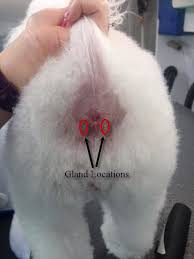 Anal Glands
Anal Glands
The anal glands are two small dime-sized sacs located on either side of the rectum, at the four o'clock and eight o'clock positions and are found in a variety of animals. Their biological function is to impart a distinct odor to the stool that is unique to pets, and consequently they serve very little purpose in domesticated dogs and cats. This odor is very foul and pungent. The secretion from the glands are normally expressed when a pet has a bowel movement or is frightened, due to tightening of the rectal muscles. However, if the stools are too soft or too hard, or the substance in the gland is too thick, the glands will not get expressed and can get very full or become abscessed and impacted, causing pain and discomfort. A small percentage of dogs and cats genetically produce anal gland secretions that are too thick to pass through the small ducts that extend from the sacs to the anus.
When the glands become full or impacted, pets may scoot on the ground, lick their anal area or exhibit strange behavior such as tail chasing, reluctance to allow you to touch their tail or rear end, reluctance to lift the tail or circling; sometimes cats will groom themselves excessively beneath the tail. At this point the glands need to be manually emptied, usually by your veterinarian, although many groomers are adept at expressing the anal glands. If the glands are infected antibiotics may be necessary.
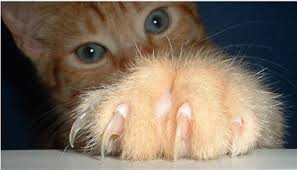 Toenails
Toenails
Keep those toenails short. Dogs and cats with overgrown nails are like women in stiletto heels. Walking is very difficult, and lameness, bone, or joint problems can occur as a result. Also, the nails can grow so long that they curl under the foot, embedding into the pads or skin, which is extremely painful for your pet. Nail trims need to be done regularly, depending on how active your pet is and how fast its nails grow. You should have your cat or dog's nails trimmed on a regular basis, either at a vet hospital or a groomer's. If you want to attempt it yourself, have a professional teach you how. Cats and dogs can get quite ornery if it isn't done properly, and accidentally cutting the nail too short will result in lots of pain and bleeding. Its best to start trimming your pets nails early on, as a puppy or kitten, to get them use to this routine grooming procedure.
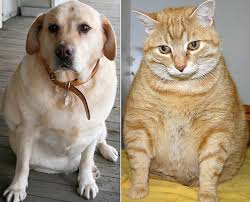 Weight
Weight
Last but not least, check for weight gain or loss. This can be crucial in determining early signs of disease or illness. I recommend weighing your pet weekly. Using your home scale, just weigh yourself holding your pet and then subtract your weight that day. Even just a few extra pounds can be significant in animals, leading to arthritis, heart disease, diabetes, and breathing difficulties. Chances are if you can pinch an inch, your pet is overweight and you should see your vet to get started on a weight loss program. Some longhaired cats and dogs can appear healthy, when in reality they have lost weight, but because of their luxuriant coat, the loss may not be readily apparent. Catching weight loss or gain in the early stages is far better than waiting until it has progressed to something more serious that's much harder to treat.
Again, be aware of what's normal for your pet, so when changes occur, you can address them immediately by calling or visiting the vet to get the problem checked out and treated before it becomes severe.
The Mission of The Lucy Pet Foundation is to reduce pet overpopulation by having mobile spay/neuter clinics across the country and to support causes that benefit animal welfare. The Lucy Pet Foundation currently has two buses that travel around Southern California focusing on spaying and neutering. These buses are state of the art surgery units. Their next focus is in generating more funds to expand the work of these buses and have more across the country.
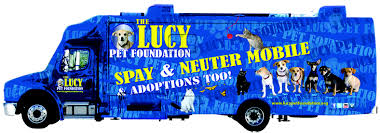 The Lucy Pet Foundation not only offers free and reduced spays and neuters, they also do microchipping, vaccines and de-wormings. Spaying and neutering is not only great for pet population control, but it has been proven that an animal will live on an average of 40-percent longer after having this surgery.
The Lucy Pet Foundation not only offers free and reduced spays and neuters, they also do microchipping, vaccines and de-wormings. Spaying and neutering is not only great for pet population control, but it has been proven that an animal will live on an average of 40-percent longer after having this surgery.
Upcoming Clinics
Free Spay & Neuter for Los Angeles City Residents! Here is a list of upcoming free or reduced fee mobile spay and neuter clinics in California:
Call for more information, questions and to reserve space to get on the list: (855) 499-5829
July 16: Superior Store, 9801 Laurel Canyon Blvd., Pacoima, CA Spay/Neuter APPOINTMENT ONLY; Vaccine Clinic 10:00am-2:00pm
July 19: Food 4 Less, 5100 N. Figueroa St., Los Angeles, CA Spay/Neuter APPOINTMENT ONLY; Vaccine Clinic 10:00am-2:00pm
July 20: Food 4 Less, 1748 West Jefferson Blvd., Los Angeles, CA Spay/Neuter APPOINTMENT ONLY; Vaccine Clinic 10:00am-2:00pm
July 22: Vallarta Supermarket, 10175 N. San Fernando Rd., Tacoma, CA Spay/Neuter APPOINTMENT ONLY; Vaccine Clinic 10:00am-2:00pm
July 23: East Valley Shelter, 14409 Vanowen St., Van Nuys, CA CLEAR THE SHELTER ADOPTION EVENT
July 25: West Valley Shelter, 20655 Plummer Street, Chatsworth, CA Spay/Neuter APPOINTMENT ONLY; Vaccine Clinic 10:00am-2:00pm
July 26: Superior Store, 133 West Avenue 45, Los Angeles, CA Spay/Neuter APPOINTMENT ONLY; Vaccine Clinic 10:00am-2:00pm
July 28: Superior Store, 3480 S. La Brea, Los Angeles, CA Spay/Neuter APPOINTMENT ONLY; Vaccine Clinic 10:00am-2:00pm
July 29: Superior Store, 10211 Avalon Blvd., Los Angeles, CA Spay/Neuter APPOINTMENT ONLY; Vaccine Clinic 10:00am-2:00pm
County and City Vouchers accepted. But remember, you must get on a list to have your pet seen at these locations. Please call The Lucy Pet Foundation toll free at 1-855-499-5829 or Email: Info@lucypetfoundation.org to schedule an appointment, or register at the events.
See the current list of clinics at http://www.lucypetfoundation.org.
http://www.lucypetproducts.com
How ViaGen Pets Works With Veterinarians
Melain Rodriguez, ViaGen Pets
 The first pet to be cloned on American soil was a success. Now, many people are rushing to their veterinarian to genetically preserve their pets' DNA.
The first pet to be cloned on American soil was a success. Now, many people are rushing to their veterinarian to genetically preserve their pets' DNA.
A successful genetic preservation and cloning depends upon ViaGen Pets receiving a high-quality tissue sample taken from your pet by a veterinarian. As a result, the veterinarian plays a key role in the genetic preservation and cloning services.
Unfortunately not all veterinarians are aware of ViaGen Pets' services. So, for the past 18 months, ViaGen Pets has been traveling across the country, attending veterinary conferences, with the goal to inform veterinarians about their services and educating them on the process. This will give them the knowledge when a client comes to them who may be interested in this process.
Melain Rodriguez explains that this service can really offer a benefit to the veterinarians. Most veterinarians, at one point in their career, are going to go through what's called, 'Compassion Fatigue,' in dealing with end-of-life situations for pets. They got into this career because they love animals, but unfortunately they spend so much of their careers dealing with ill animals.
What genetic preservation can do for the veterinarian is to give them an extra tool. This is something additional that they can offer a client in an end-of-life situation, when a client comes to them and says, "Doc, is there anything else we can do?" This allows the veterinarian to offer genetic preservation, and potential cloning, as an alternative. This is also something that can give a client hope.
This can be a very emotional time for a client who has lost their pet. Melain has dealt with this on many occasions, and is available to talk to potential clients. They don't want them to make a rash, emotional decisions. They want potential clients to be fully informed and have their expectations met before they start this process.
Melain says this is something you should actually think about before you are emotional and in the end-of-life situation with your pet. You should make sure that this is what you want to do, which will then allow you to plan for it ahead of time.
If you are not sure about cloning, you can still have your pet's DNA genetically preserved and store it indefinitely.
To learn more, visit ViaGenPets.com or call Melain Rodriguez personally at 888-876-6104.
5 Pets That Are Illegal To Own
Robert Semrow, Animal Radio Listomania
 Ok, I know what you are thinking… If they are pets they are certainly legal. Well, that's not necessarily the case depending on the state or city that you live in. There can be legal issues for having common pets that exist in different states or cities.
Ok, I know what you are thinking… If they are pets they are certainly legal. Well, that's not necessarily the case depending on the state or city that you live in. There can be legal issues for having common pets that exist in different states or cities.
Let's start with Ferrets. In several states and large cities (Including California, Hawaii, New York City and Dallas to name a few), ferrets are illegal and if caught, you could face fines up to $200K or even prison time. That's right, ferrets; the court jesters of the animal world, filled with curiosity and enough cuteness to power any world are illegal in certain places. Some states allow you to have them as pets, but require additional filings and you must meet certain requirements.
Next up is Gerbils. If you are in California, you may be surprised to know that your state does not allow gerbils as a pet as they are deemed to pose a threat to the eco system. These tiny palm-sized pets are common household pets in many areas of the U.S. as they are easy to care for and handle, while also being social creatures.
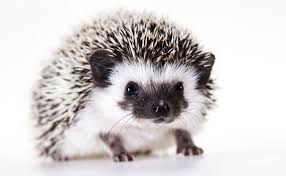 Next is the Hedgehog - No, I'm not talking about the video game version but the super cute, albeit very spiny hedgehog. These fascinating and easy to care for animals have very simple needs and are quite adaptable. They are interactive, yet, if handled improperly can use their quills to get their point across. Yes, I went there. The bigger concern is that there are certain states and municipalities who deem them illegal as pets and/or have severe restrictions including California, Georgia, Hawaii, Pennsylvania and more.
Next is the Hedgehog - No, I'm not talking about the video game version but the super cute, albeit very spiny hedgehog. These fascinating and easy to care for animals have very simple needs and are quite adaptable. They are interactive, yet, if handled improperly can use their quills to get their point across. Yes, I went there. The bigger concern is that there are certain states and municipalities who deem them illegal as pets and/or have severe restrictions including California, Georgia, Hawaii, Pennsylvania and more.
Let's not forget that there are number of fish and snakes that are also illegal to own in various states through the United States. It is remarkable the variety of these species that are found legally in the homes of people in some states, while not allowed in the homes in other states.
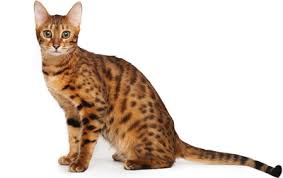 Finally, I would be remiss, to not bring up the troubling movement to ban certain breeds of dogs and cats in cities and states across the country. From Bengal Cats to Pit Bull Dogs, traditional pets are increasingly under the scrutiny of the legal system.
Finally, I would be remiss, to not bring up the troubling movement to ban certain breeds of dogs and cats in cities and states across the country. From Bengal Cats to Pit Bull Dogs, traditional pets are increasingly under the scrutiny of the legal system.
While this list could go on for many days, I bring it up as a reminder that while you have rights, states and cities have laws. I'm not saying these laws or regulations are right or wrong. I am saying consider this when you are looking at adopting a new animal family member and remember that you are responsible to know the laws where you live in regards to your animal family members. Don't make the mistake of assuming anything or you may find yourself in big trouble and your pet confiscated or worse.
Share your pet legal stories on our Animal Radio Facebook Page.
http://petworldinsider.com
 How to NOT Train a Dog -Dr. Debbie
How to NOT Train a Dog -Dr. Debbie
The other day I was walking my dog in a community area and encountered a lady with two Shih Tzu's. As we approached, her dogs rallied with barking and tugging on their leashes. I asked if her dogs were friendly, so as to decide if we could approach. The lady scowled, embraced her still barking dogs and grumbled, "Do they look like they're friendly?"
Realizing this dog owner was more unsociable than her dogs, I decided to vamoose, but not before I envisioned this blog topic how pet owners mold unsocial dog behavior.
Unwanted doggie behavior such as lunging and barking on the leash become established when the dog owner hasn't made it clear what the appropriate behavior is, fails to correct and redirect to a more suitable behavior, or simply reinforces the undesirable behavior through actions or words. Face it - there aren't bad dogs, just poorly trained ones.
Avoid making these top 5 training mistakes:
1. Secluding Your Dog in the Backyard
Keeping your dog in lock down almost guarantees problem behaviors will develop such as biting, inter-dog aggression and phobias to anything from noises to car travel. Isolated dogs lack the experience and confidence when faced with novel situations while socialized dogs adapt easily.
I see it all the time - the dog owner prides herself in keeping her dog safe. "I didn't want Fido to catch any diseases as a pup, so I didn't let him out of our backyard till he was a year old." The overwhelming fear of infectious diseases like parvovirus causes some well-meaning owners to confine their new dog or puppy to the limits of house and yard. Even more extreme is never allowing a puppy to step foot outside until after their last puppy vaccinations! Puppies are most adaptable to new experiences between 6 and 16 weeks - this is the time to expose them to unfamiliar places, people and animals.
That doesn't mean you should take your eight week old puppy to dog parks, but rather to use good sense selecting low dog traffic areas and visiting with family and friends outside of the home that have properly vaccinated pets.
2. Skipping Obedience Training
Going to school is a must for any new dog to a home, whether a puppy or adult. No two dogs are the same, and each learns differently. Formal obedience training is a useful tool to gently reaffirm who's in charge and sets the rules in the house. Statistics show that dogs that go through formal obedience training are less apt to develop behavior problems and be relinquished to shelters.
 3. Reinforcing Fear at the Veterinary Office
3. Reinforcing Fear at the Veterinary Office
In the exam room I cringe when I see a dog owner comforting a nervous, fearful or aggressive pet. That "good boy" and pat on the head reinforces your dog's behavior, making it more likely that on the next hospital visits he'll behave the same, or worse. Some problem behaviors escalate making it difficult for the veterinary staff to examine or treat the animal. This may mean additional costs for sedation or anesthesia for routine medical needs.
It's natural for a pet owner to want to reassure a pet when he is frightened and it can be difficult to hold back the urge to soothe him. However, the best strategy is to ignore those fearful behaviors in the vet office. Don't be tempted to kiss, snuggle or hold Fido on your lap when he is misbehaving. Rather, place the dog on the floor, refocus your dog's attention to you, and cue him to "sit" or "lie down."
4. Not Using Food as a Reward
Food shouldn't just be for the taking. Don't leave food out for your dog to graze whenever he wants and don't give treats just for the sake of giving a treat. Present food and treats as a reward for good behavior such as sitting quietly, going to a pillow, or performing a trick or obedience work. This places you at the top of the household hierarchy. You become the provider of great edibles in the house, and your dog will be motivated to listen to your requests in other situations.
We all love to spoil our dogs and give treats at times. But be sure to give treats for a reason, or you will have a spoiled doggie brat on your hands.
5. Not Exercising Your Pet Enough
Inadequate exercise can result in obesity and boredom, and may lead to problem behaviors like separation anxiety, destructive chewing and excessive barking. Dogs should get 30 to 60 minutes of sustained physical activity each day for optimum mental and physical benefit. And no- letting Buffy run around the backyard during the day is not adequate exercise.
Not all breeds are cut out for all exercise - a Labrador may enjoy retrieving games or swimming, a Jack Russell terrier may thrive with jogging or Frisbee, while a Basset hound will be satisfied with a leash walk.
Your dog can't be a well-adjusted, socialized canine citizen without you, as the pet owner, taking an active role in training. Put the time in, and you'll be thanked many times over with an outgoing, friendly canine pal that can accompany you on life's adventures.
Featured veterinarian known as "Dr. Debbie" on national pet radio program, Animal Radio. Ebook author of "Yorkshire Terriers: How to Be Your Dog's Best Friend"; "Pugs: How to Be Your Dog's Best Friend"; "Mini Schnauzers: How to Be Your Dog's Best Friend"; and "Shih Tzu: How to Be Your Dog's Best Friend."
http://www.drdebbie.net
 Animal Radio News - Lori Brooks
Animal Radio News - Lori Brooks
Doggy DNA Nabs Poop Offenders
A luxury apartment community near Grand Rapids, Michigan says it will use DNA technology as a way to sniff out dog owners who fail to pick up their pets' poop. The Ridges of Cascade complex is asking dog owners to swab their pet's mouth so it can build a DNA database that will allow it to identify residents who ignore its strict cleanup policy. The management company has already contracted with the Tennessee-based company PooPrints to collect DNA samples of each dog in the development. It's estimated that about 60-percent of the apartment residents own a pet. From now on, if a doggie do-do pile is found on the grounds, a sample of it will be sent to PooPrints, where it will be matched to the offending dog and owner. Violators will face a $350 fine.
 We Finally Know Why Cats Love Boxes!
We Finally Know Why Cats Love Boxes!
Anyone who has spent time with cats knows how they love to find their way inside boxes, but there's actually a scientific explanation behind the attraction between cats and boxes. According to the folks at WIRED cats are naturally wired to like small, closed in spaces; it's their natural animal instinct for safety and security. Also, a cat, entering an enclosed space has an adaptive coping mechanism that serves to reduce its stress and give it time to sort things out. And, there is also a physiological reason your cat prefers small area like boxes: cats temperatures run a bit cooler than humans so cats prefer a warmer environment. Seeking out a snuggly box or contained area allows it a cats on body heat to warm up a small space and keep it toasty warm.
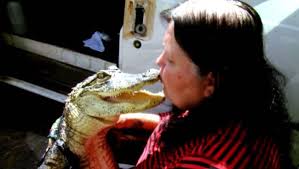 Woman Gains Support To Keep Pet Alligator
Woman Gains Support To Keep Pet Alligator
A community is coming together in support of a Lakeland, Florida, woman who is fighting to keep her pet alligator that she's been a mother to for 10 years. The Florida Fish and Wildlife Conservation Commission says she may have to give up Rambo because of a licensing issue, so she has set up a petition on Change.org, asking the agency to allow Rambo to stay in her care. A special Facebook page has also been set up to gain support for Rambo, who by the way is more than six feet long. According to authorities, a pet alligator that size must live on two-and-a-half acres or more of land. His owner says Rambo has never lived in the wild and had already developed sensitivity to sunlight by the time she rescued him 10 years ago.
Average Size of Dogs Are Shrinking
A new study from the University of Sydney says the average size of a dog is shrinking because more pet owners now prefer smaller dogs as companions. Researchers analyzed nearly three decades of registrations to the Kennel Club, a UK based dog welfare organization. They found dog lovers are also increasingly opting for bulldogs and pugs because of their large heads. The popularity is said to be driven partly by their big eyes and chubby cheeks that trigger the same "caretaking behavioral responses" that adults have towards babies. The study, in the journal Canine Genetics and Epidemiology, found the average height of a dog in 2010 was 47.7cm or almost 19 inches. Ten years earlier a typical dog stood at close to 20 inches tall. The lead researcher says they also found that the demand for smaller dogs has increased every year from 1986.
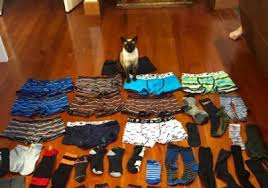 This Cat's Got More Than Your Tongue
This Cat's Got More Than Your Tongue
A pet feline in New Zealand has been stealing men's underwear and socks from other people's homes. In just 2 months, the 6-year-old cat named Brigit, acquired 11 pairs of underwear and more than 50 pairs of socks. Brigit's owner says she has put notes in every mailbox on her street to warn her neighbors. One day Brigit came in from being outdoors, very motherly carrying a sock like it was a kitten.
Pet Cemeteries Becoming Popular in China
Pet cemeteries are becoming increasingly popular in China with owners paying a lot of money to bury their animals. It costs between 50 and 1,800 dollars for an owner to buy their pets a plot in Chinese pet cemeteries. Rows of tombstones at one cemetery bear the names of pets along with flowers, toys, food and even calcium pills and chew bones were seen placed beside them. Pet owners who wish to give their animals a more formal send off can opt to bury their animal under the roots of trees or in a single grave. They can also opt for cremation.
 Listen to the entire Podcast of this show (#867)
Listen to the entire Podcast of this show (#867)



 Sloths only eat leaves, and in fact, three-toed sloths are not found in captivity (zoos, etc.) outside of their habitat country because they wouldn't survive. They get too stressed out and no one can get their diets correct. So how can you tell when a sloth is stressed out when they have a permanent smile on their face? That is the hard part!
Sloths only eat leaves, and in fact, three-toed sloths are not found in captivity (zoos, etc.) outside of their habitat country because they wouldn't survive. They get too stressed out and no one can get their diets correct. So how can you tell when a sloth is stressed out when they have a permanent smile on their face? That is the hard part! In August of 2014, Sam co-founded the Sloth Institute Costa Rica whose vision is to enhance and expand scientific knowledge about sloths to assure their global conservation and preservation.
In August of 2014, Sam co-founded the Sloth Institute Costa Rica whose vision is to enhance and expand scientific knowledge about sloths to assure their global conservation and preservation. Last week, Doc Halligan taught us how to give our pet a weekly check up. She stated that knowing exactly what to look for could mean the difference between life and death and that early detection gives you the best odds when it comes to your pet's health.
Last week, Doc Halligan taught us how to give our pet a weekly check up. She stated that knowing exactly what to look for could mean the difference between life and death and that early detection gives you the best odds when it comes to your pet's health. Anal Glands
Anal Glands
 Weight
Weight
 The first pet to be cloned on American soil was a success. Now, many people are rushing to their veterinarian to genetically preserve their pets' DNA.
The first pet to be cloned on American soil was a success. Now, many people are rushing to their veterinarian to genetically preserve their pets' DNA.  Ok, I know what you are thinking… If they are pets they are certainly legal. Well, that's not necessarily the case depending on the state or city that you live in. There can be legal issues for having common pets that exist in different states or cities.
Ok, I know what you are thinking… If they are pets they are certainly legal. Well, that's not necessarily the case depending on the state or city that you live in. There can be legal issues for having common pets that exist in different states or cities.
 Next is the Hedgehog - No, I'm not talking about the video game version but the super cute, albeit very spiny hedgehog. These fascinating and easy to care for animals have very simple needs and are quite adaptable. They are interactive, yet, if handled improperly can use their quills to get their point across. Yes, I went there. The bigger concern is that there are certain states and municipalities who deem them illegal as pets and/or have severe restrictions including California, Georgia, Hawaii, Pennsylvania and more.
Next is the Hedgehog - No, I'm not talking about the video game version but the super cute, albeit very spiny hedgehog. These fascinating and easy to care for animals have very simple needs and are quite adaptable. They are interactive, yet, if handled improperly can use their quills to get their point across. Yes, I went there. The bigger concern is that there are certain states and municipalities who deem them illegal as pets and/or have severe restrictions including California, Georgia, Hawaii, Pennsylvania and more.
 Finally, I would be remiss, to not bring up the troubling movement to ban certain breeds of dogs and cats in cities and states across the country. From Bengal Cats to Pit Bull Dogs, traditional pets are increasingly under the scrutiny of the legal system.
Finally, I would be remiss, to not bring up the troubling movement to ban certain breeds of dogs and cats in cities and states across the country. From Bengal Cats to Pit Bull Dogs, traditional pets are increasingly under the scrutiny of the legal system.
 How to NOT Train a Dog -
How to NOT Train a Dog - 3. Reinforcing Fear at the Veterinary Office
3. Reinforcing Fear at the Veterinary Office
 Animal Radio News -
Animal Radio News -  We Finally Know Why Cats Love Boxes!
We Finally Know Why Cats Love Boxes!
 This Cat's Got More Than Your Tongue
This Cat's Got More Than Your Tongue